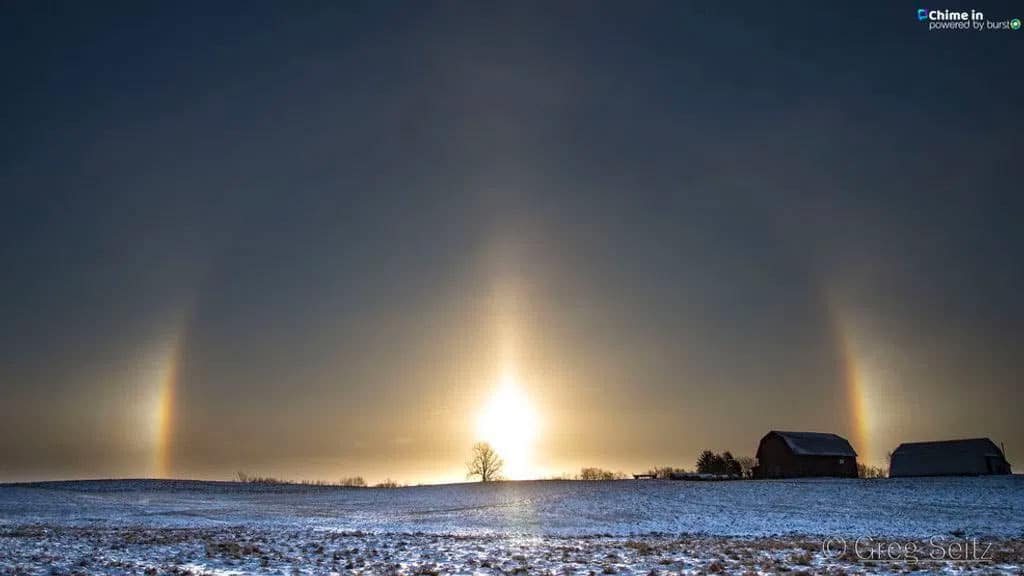What makes a halo around the moon or sun?
“Lunar Halo” by Tom Wildoner on Flickr.
A halo around the moon or sun is caused by the refraction, dispersion, and reflection of light by ice crystals.
High-altitude, cirrus clouds are composed of millions of tiny ice crystals. When light (i.e. moonlight or sunlight) passes through these crystals, the light is refracted (or bent) due to the difference in the speed of light between the air and ice crystal.
The refracted light is then split or broken into various colours based on the many shapes and angles of the ice crystals where is is reflected off the inner surface of the ice crystals. When light exists the ice crystal, it creates a halo around the moon or sun.
The most common halo is the 22-degree halo, which refers to the radius of the circular ring.

How To See A Halo
Though atmospheric optic events like these are not rare, they do require the right conditions to form.
Your chances of spotting a halo around the moon are greater during the winter when they’re most common. Even though it can be seen with the unaided eye, use a telescope or binoculars for a closer look.
The transparent cirrus clouds cover the full or nearly full moon, giving cloudy skies an advantage when looking for halos around the moon.
IMPORTANT: It is not safe to look directly at the Sun without eye protection made for solar viewing. Never view the Sun through a camera lens, binoculars, or telescope without a proper solar filter over the front of the optics to avoid serious eye injury.
Unique Perspective
One of the most interesting facts about halos around the moon or the sun is that each one is different.
Each person sees the ice crystals from a different position and perspective. This means that even though several people might be viewing the same halo at the same time, it will appear unique to each person.
In the following photo by Alan Dyer, you can see a complex halo display around the almost Full Moon from the photographer’s vantage point.
‘Ice Halos by Moonlight’ by Alan Dyer. NASA Astronomy Picture of the Day, May 14, 2022.
Other Atmospheric Optics Examples
Halos around the moon and sun are examples of the interaction of light with particles in the atmosphere, creating interesting visual effects.
Other phenomena include:
- Moon/sun dogs: bright spots on either side of the moon/sun
- Tangent arcs: wings that appear outwards from where they touch the 22º halo above or below the moon/sun
- Sun pillars: shafts of light extending vertically above the sun
Example of a sun dog by Greg Seitz
Are They Connected to the Weather?
Halos around the moon and sun have been associated with rain in weather folklore.
Typically, cirrus clouds move into an area ahead of a storm. So, even though it’s not a guarantee that will rain, it is often true.
The old saying is: A ring around the Sun or Moon, means rain or snow is coming soon.


